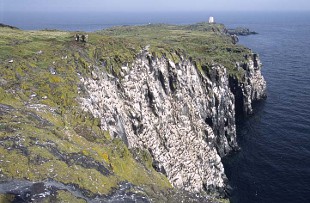The island is renowned for its bird populations, its seals, its history and its carpets of flowers. The reserve, at the mouth of the Forth, has a boat service from Fife and East Lothian during the visitor season.
David Pickett, the Isle of May reserve manager, said: “The Isle of May is a wonderful place to see seabirds and seals – and it’s certainly the best place in Scotland to see puffins. The island is a world dominated by birds and seals – a bit of role reversal from what we’re used to and an amazing experience. We hope to see lots of people out this year, enjoying all the amazing sights.”
It’s free to visit the nature reserve, but you must take a boat trip to reach the island. Sailings are on the privately-run May Princess or Osprey of Anstruther from the Anstruther Harbour or through the Scottish Seabird Centre in North Berwick.
Known locally as ‘The May’, this small island sits on the edge of the Firth of Forth. The island’s importance for seabirds has drawn scientists to its shores for many years and the May is home to the oldest continuously running bird observatory in the UK. The May is also a regular haunt for grey seals, often seen lounging on the shoreline rocks. This island is a historical gem and it’s been a place of pilgrimage for centuries with an early island monastery. The May was also the site of Scotland’s very first lighthouse, built in 1636, while the current, castle-like lighthouse was designed by the engineer Robert Stevenson.

